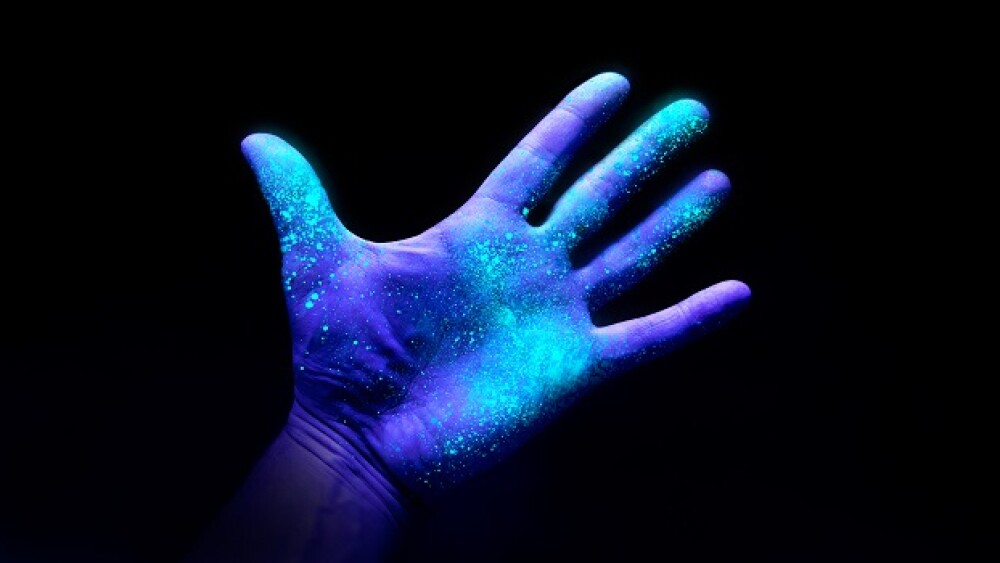Researchers have developed a new form of UV light that is safe for people but decreased the level of indoor airborne microbes by more than 98% in less than five minutes.
It’s well known that ultraviolet (UV) light kills pathogens. For example, laboratories that utilize laminar flow hoods for working with pathogens typically have built-in UV lights used to kill any bacteria or viruses when the hoods are not in use. However, certain types and excessive exposure to UV light can also cause skin cancer and eye damage — such as excessive exposure to sunlight.
Now, researchers at Columbia University Vagelos College of Physicians and Surgeons with collaborators in the UK have developed a new form of UV light that is safe for people but decreased the level of indoor airborne microbes by more than 98% in less than five minutes. The group worked with researchers at the University of St. Andrews, the University of Dundee and the University of Leeds in the UK.
“Far-UVC rapidly reduces the amount of active microbes in the indoor air to almost zero, making indoor air essentially as safe as outdoor air,” said David Brenner, director of the Center for Radiological Research at Columbia University Vagelos College of Physicians and Surgeons and co-author of the study. “Using this technology in locations where people gather together indoors could prevent the next potential pandemic.”
The research was published in the journal Scientific Reports.
Brenner went on to say, “Far-UVC light is simple to install, it’s inexpensive, it doesn’t need people to change their behavior, and evidence from multiple studies suggests it may be a safe way to prevent the transmission of any virus, including the COVID virus and its variants, as well as influenza and also any potential future pandemic viruses.”
Far-UVC is a shorter wavelength than the typical UVC light that is known to kill pathogens. Because of the shorter wavelength, it can’t penetrate living skin or eye cells. However, it is still effective at killing bacteria and viruses. About a decade of studies have demonstrated that far-UVC is safe for people while able to kill airborne bacteria and viruses.
What’s new about this study is that it was conducted in full-sized rooms similar to real-world conditions, as opposed to small experimental chambers. The experiments were in a room-sized chamber with a ventilation rate similar to that of a home or office, which is about three air changes per hour.
They utilized a sprayer to continuously emit an aerosol of Staphylococcus aureus, a bacterium that is slightly less sensitive to far-UVC light than coronaviruses but was similar to the coronaviruses that cause COVID-19 and SARS. Once the microbe levels in the chamber stabilized, they turned on commercially available overhead far-UVC lights. The far-UVC light inactivated more than 98% of the airborne germs in only five minutes.
In addition, even though they continued to spray microbes into the room, the low level of viable germs was maintained. They found that the far-UVC light was equivalent to 184 equivalent air exchanges per hour, approximately sixty times that of standard airflow.
“Our trials produced spectacular results, far exceeding what is possible with ventilation alone,” said Kenneth Wood, lecturer in the School of Physics and Astronomy at the University of St. Andrews and senior author of the study. “In terms of preventing airborne disease transmission, far-UVC lights could make indoor places as safe as being outside on the golf course on a breezy day at St. Andrews.”
Earlier studies have already demonstrated far-UVC’s ability to kill SARS-CoV-2 and other coronaviruses, influenza viruses and drug-resistant bacteria.
Brenner noted, “What’s particularly attractive about far-UVC technology as a practical method of preventing indoor disease transmission is that it will be equally good at inactivating all future COVID variants, as well as new infectious viruses that have yet to emerge, while retaining efficacy against ‘old-fashioned’ viruses like influenza and measles.”
It’s also able to kill microbes that have developed resistance to vaccines and antibiotics.





